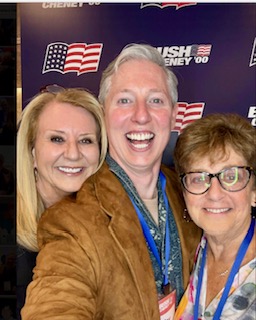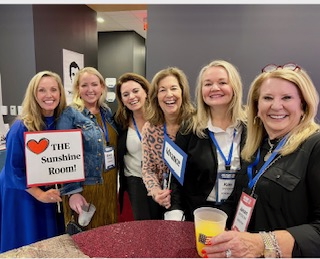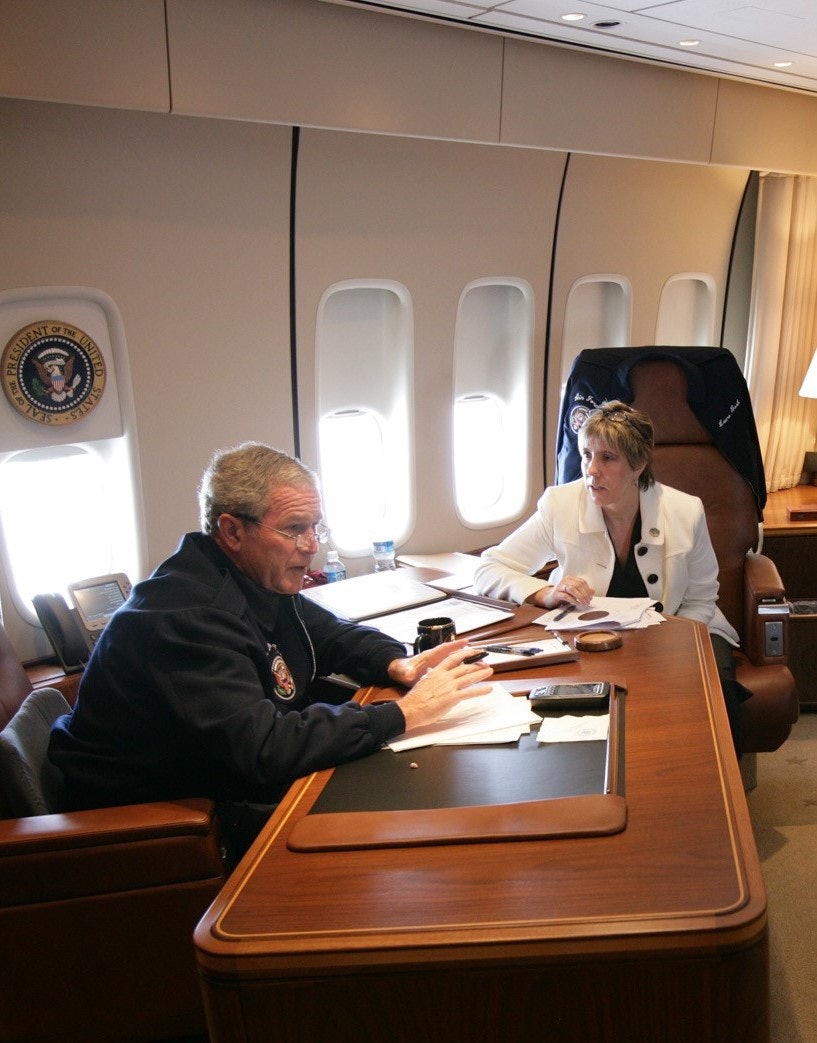This month, we welcome Janan Grissom for “Five Questions With…” as she reflects on the recent “301 Congress Avenue” reunion — an extraordinary gathering of campaign staffers in Austin to commemorate the 25th anniversary of Bush-Cheney 2000. Grissom, who later served as Deputy Director of the White House Visitors Office and White House Liaison at the Treasury Department, shares insights and stories from her time on the Bush-Cheney campaign. “Nothing compares to those 18 months on the 2000 campaign,” she says. “It wasn’t just a job; it was a deeply personal mission.”
Q: What led to your initial involvement with the Bush-Cheney 2000 campaign? Was there a particular moment or decision that set you on that path?
I had been working for several years at a large church planning events. I found myself ready for a change, but no direction as to what that was. In the spring of 1999, the buzz around town was then-Governor George W. Bush was going to run for President. I lived in the same city as a man I supported, volunteered and voted for and his team was starting a Presidential campaign. What an opportunity! Since the campaign was going to be headquartered in Austin, I realized I could manage my family and still work as a small part of history, so felt compelled to follow this adventure. Friends provided an opportunity for an interview with the Exploratory Campaign, and I was offered a job in the Treasury Division as Travel Coordinator. It was a pivotal point for me. I wasn’t sure what was ahead, but took a leap, quit my job, and walked into 301 Congress Avenue. The atmosphere was anticipatory, full of committed, energetic, smart young adults, sprinkled with proven, experienced men and women. I was part of something bigger than myself.
Q: You recently brought together an incredible 25th anniversary reunion of the campaign team in Austin. What was it about the campaign experience — both professionally and personally — that inspired so many to return and reconnect?

Initially the idea was brought up in 2018 and there seemed to be a lot of interest. After a COVID delay, the interest still seemed strong, so we set a date. Living in Austin and retired with time on my hands, it made sense for me to help manage it to a reality.
As to why so many were inspired to return … hard to explain in words, but my thoughts:
This campaign was unique in that it was started by a special group of Texans, who knew the Governor well and transplanted political folks from D.C. and all over the nation. Most of the staff were young and passionate about Governor Bush and his vision for the country, so they uprooted their lives from all over the country to move to Austin.
In 2000, campaigns planned for a win or lose outcome. When the outcome was “recount”, we were under unbelievable urgency, everyone on the campaign immediately shifted gears to continue the work. We scattered; beginning that morning at 5 a.m., we hurried to send people to Florida for the recount and to D.C. for potential inaugural and transition. Some of us stayed Austin to shut down the office. So, there was no celebratory closure to such an important occasion.
Many staffers went into the Administration where the connection continued, then went on to do amazing things. But nothing is quite like those 18 months on the 2000 campaign. It was not just a job, but a deep emotional mission. People sacrificed to work together because this work meant something. Their futures started during the campaign and made them eager to reconnect with others who were “in the room where it happened.”

Q: Campaign teams often develop a unique culture under high-pressure conditions. What qualities — both personal and professional — did you notice most campaign staffers had in common?
They thrived in the campaign environment. This campaign had an organized clear structure, and the leadership was made up of long-time stable, trusted advisors. Everyone knew the priority was the mission of Governor and Mrs. Bush. They were cause driven, whip-smart, loved a challenge, could adapt to constantly changing logistics, willing to work hard, respectful of the team, and not in it for self-gain. Within this environment, there was little substantial conflict. Whatever issues arose, they were not significant enough to change their direction. There simply was no other place they wanted to be at that time.
Q: Your career has spanned executive leadership roles that demand exceptional organization and strategic vision — from the campaign and Treasury to the Houston Super Bowl Host Committee and the World Petroleum Congress. How did your time on the Bush-Cheney campaign shape the leadership skills that defined your success?
This extraordinary experience of a wide variety of unusual and complex features provided experience that led me to other jobs with the same structure. To plan, execute, breakdown, and audit a large project in less than three years. I found I loved the administrative area in the culture of this type of work, and continued to be around others who felt the same way. It is a niche administrative area and requires a different mindset than normal jobs. When given a task outside your realm, figure it out, don’t take no for an answer, just back up and try another door. Enjoy the challenge and be very adaptable to change plans on a dime. These concepts energize me.
Q: Looking back, is there a favorite campaign story or moment that stands out—one that still makes you smile or encapsulates the energy of that era?
Barnstorm. In October 2000 I was organizing logistics for surrogates for the 2000 debates and on my way to Raleigh-Durham. I got a call from the campaign chairman, Don Evans. He asked me to return to the office to help with a new immediate objective called The Barnstorm for Reform Tour. An experienced D.C. team led by Barry Jackson came to Austin. When he arrived, Don said we were to set up seven teams each, led by a sitting Republican Governor, using private airplanes to spread out over the country for a three-day blitz. While I was trying to get my head around my responsibilities, he said, “Ok, get to it.” And turned around back to his desk, assuming and trusting we would get it done. It was quite an undertaking to plan this last two weeks before Election Day.

Most of the campaign was involved at some level, in addition to their other responsibilities. it was the most harrowing, multifaceted, time-consuming, exhilarating, and satisfying project I had done to date (until Recount). It totally epitomized the culture and personality of that campaign. The best way to describe it is through remarks by GWB kicking off the tour:
“We started this Barnstorm for Reform in Austin yesterday, (October 22, 2000) with 28 of my fellow Republican governors. And today they are carrying our message of reform across America – and on to victory on November 7. I didn’t want to send spokespeople to carry this message. I wanted to send examples. These men and women are part of a great movement of reform that is changing our country and changing our politics.”
And I’ll close with two excerpts from media stories about the Barnstorm for Reform:
“Dubbed the ‘Galloping Governors’ by one wit, part of the Bush campaign’s Barnstorm for Reform, a three-day whirlwind tour by Republican governors to reach undecided voters. ‘I’ve never seen all of the Republican governors take three days out of their schedules to campaign like this,’ New Jersey Christie Todd Whitman said. The barnstorming kicked off Sunday with a Texas rally attended by 29 GOP governors, who spent the next three days visiting 48 cities in 25 states where 319 Electoral College votes are at stake.” – The Morning Call, Oct 24, 2000.
“State Governors walking into local diners, county meetings, etc talking the Texas Governor.
This same scene was repeated in 13 other contested states today as the Bush presidential campaign rolled out one of the most complex and expensive political operations ever undertaken. Acting on the popularity of many governors and the perception that they are Washington outsiders, the campaign hired private jets for seven teams of them (at prices that approached $5,000 an hour per aircraft), found places for them to speak and arranged for drivers to ferry them and restaurants to feed them. In all, 28 of Mr. Bush’s fellow Republican governors joined the effort.” The New York Times, Oct 24, 2000



























